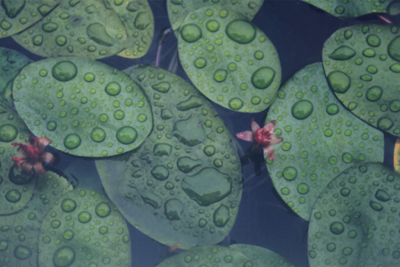
The Araden hosts lots of rare and endangered specimens, including Brasenia schreberi, a kind of rare aquatic plant under national protection. (Picture: Cheng Yu)
The Wuhan Institute of Botany under the Chinese Academy of Sciences recently established a garden of aquatic plant germplasm resources. Covering 5.3 hectares, it is the biggest in East Asia.
Since the Institute has restored researches in aquatic plant biology and inland waters, which is one of the institute’s three major areas of study, it has so far achieved remarkable results in promoting sustainable utilization of plant resources and the optimization of the ecological functions of inland water bodies and wetland vegetation.
China is home to about 350 water-grown plant varieties. Scientists of the Wuhan Institute of Botany have collected 230 water-grown plants from around the country, ranging from Guangxi in the south and the Sino-Russian border area in the north. The plants include species that are on the verge of extinction.
The germplasm resources garden has attracted attention from abroad. Botanists from Russia, Britain, Japan, the Republic of Korea, Vietnam and Myanmar have exchanged plant varieties with the Institute, and some rare plant species have been introduced into China.





